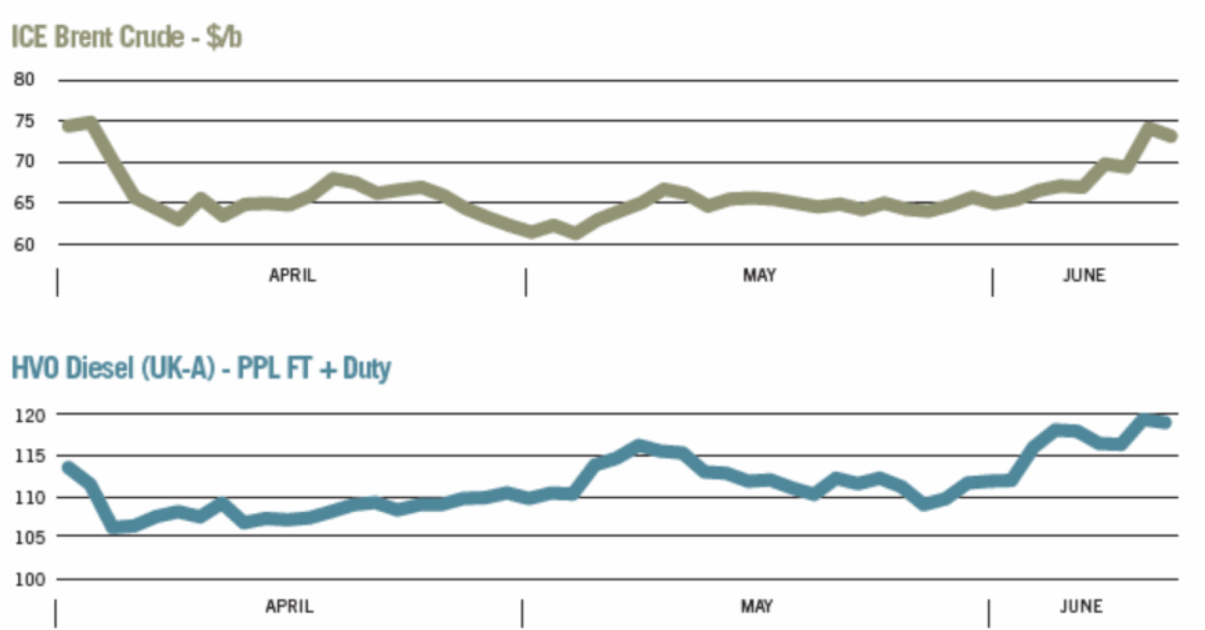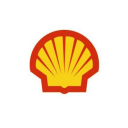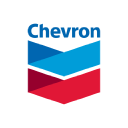Oil & Gas Profits Driving Acquisitions & Dividends as Global Energy Transition Falters

Market trends in oil & gas reveal promising growth potential following Q2 2025 results and milestones. Investors can capitalize on strategic investments in top companies while managing risks in an evolving landscape.
- The global oil & gas market in Q2 2025 demonstrates significant volatility and opportunity, driven by geopolitical tensions, supply constraints, and fluctuating demand patterns that create both challenges and investment prospects for market participants.
- Oil prices have seen fluctuations, with analysts projecting further increase in oil demand due to ongoing supply disruptions from sanctions on major producers and Middle Eastern tensions, while demand remains robust particularly in emerging Asian markets.
- Major oil & gas companies are reporting strong financial performance through the second quarter of 2025, with many achieving record production levels, substantial free cash flow generation, and aggressive shareholder return programs including increased dividends and share buybacks.
- Technological innovation continues to drive operational efficiency improvements across the sector, with companies investing heavily in automation, artificial intelligence, and advanced drilling techniques that reduce costs and enhance production capabilities while supporting environmental objectives.
- Natural gas is emerging as a critical bridge fuel in the global energy transition, with companies expanding liquefied natural gas operations and strategic acquisitions in key international markets to capitalize on growing demand from power generation and industrial sectors.
In the summer of 2025, the global oil and gas market remains dynamic, with fluctuating prices and evolving geopolitical circumstances influencing the industry's outlook. Investors looking to navigate this sector need to understand the underlying forces shaping the market. Oil & gas remain essential components of the global energy mix, despite growing emphasis on renewable energy sources. A comprehensive understanding of the market’s key trends and how companies are positioning themselves is crucial for making informed investment decisions.
Market Overview
The global oil & gas industry is currently experiencing a period of both volatility and opportunity. Several macroeconomic and geopolitical factors are at play, affecting supply chains, energy demand, and the strategic decisions of major oil companies.
Price Trends and Global Demand
Oil price have seen notable fluctuations due to ongoing supply constraints and geopolitical tensions in key producing regions. Analysts expect demand to rise further towards the end of the year. The long-term outlook for oil remains bullish as demand for energy continues to outpace supply growth, particularly in emerging markets.

While the transition to renewable energy continues, oil demand remains relatively stable, especially in Asia, where economic growth is expected to drive energy consumption in the coming decades.
Geopolitical Factors and Supply Constraints
The ongoing tensions in the Middle East, as well as sanctions on key oil producers such as Iran and Venezuela, have led to tight supply conditions. This has heightened the potential for price volatility, which often benefits oil producers. In a Reuters report,
"An oil price jump is expected," said Jorge Leon, Rystad Head of Geopolitical Analysis and former OPEC official. "Even in the absence of immediate retaliation, markets are likely to price in a higher geopolitical risk premium."
These supply concerns are likely to persist, offering opportunities for investors in oil-producing regions to see favorable returns, particularly in countries that are less affected by sanctions or conflicts.
Major Companies Positions
Despite challenges in the global oil supply chain, oil & gas market giants continued to be profitable aided by the rebound in oil prices and its investments in natural gas projects.
ExxonMobil reported a strong Q2 earnings report in July 2025 with the company’s focus on capital discipline and higher-than-expected production levels, positioning it as a leader in the market. In the same period, Chevron announced an increase in its dividend payout and committed to reducing its carbon footprint. The company has been consistently profitable with a reported adjusted earnings of $3.1 billion and record production of 1 million BOE per day in the Permian Basin for the second quarter of 2025.
Similarly, Diamondback Energy reported an average oil production of 495.7 thousand barrels per day and generating $1.2 billion in free cash flow for Q2 2025. The company has maintained strong operational efficiency at 50.9 barrels per million dollars of capital expenditure, representing a 14% improvement over original guidance.
Growth-Focused Operators
Athabasca Oil Corporation posted a production of 39,088 boe/d and adjusted funds flow of $128 million in Q2 2025. The company maintains a net cash position of $119 million. Athabasca's Leismer expansion project remains ontrack to reach 40,000 bbl/d capacity by end-2027 with a capital efficiency of$25,000 per barrel per day. CEO Stuart Nicholls emphasized the company's strategic position:
"With low corporate break-evens, differentiated long-life assets and a pristine balance sheet, the company is well positioned to advance its strategic priorities."
Arrow Exploration continues expanding production in Colombia's Llanos Basin, currently producing between 4,600-4,800 boe/d net. Recent successful horizontal wells AB HZ4 and AB HZ5 are producing 880 BOPD and1,790 BOPD gross respectively. The company maintains a strong balance sheet with $13.5 million in cash and no debt. CEO Marshall Abbott commented on the recent developments:
"The AB HZ5 and AB HZ4 horizontal wells have been successfully developed at the Alberta Llanos field, with rates and pressureshigher than originally forecast. Both wells are highly accretive with payback expected in the first six months at current oil prices."
Emerging Resource Development
Elixir Energy is positioning itself as a strategic "fast follower" in Queensland's Taroom Trough, holding approximately 2,000 square kilometers of acreage with 2.6 trillion cubic feet equivalent of independently certified 2C contingent resources. The company has implemented a disciplined three-phase strategic plan aimed at converting over 150 billion cubic feet of 2C resources into 2P reserves by 2027.
Managing Director Stuart Nicholls explained the company's approach:
"It has been a productive quarter, with the key management positions now filled in order to take our refreshed Strategic Plan forward and prosecute the increasing number of opportunities that our high-quality portfolio of Taroom Trough acreage presents. I am pleased that our funding position is sound for the forward commitments in the first phase of our strategy where Elixir expects to commence the drilling campaign in the coming months."
Beetaloo Energy achieved a significant operational milestone with the successful completion of hydraulic stimulation on its Carpentaria-5H well, representing the longest fracture stimulation completed in the Beetaloo Basin. The 67-stage stimulation over 2,955 meters positions the company forpotential production breakthroughs, with IP30 flow test results expected bySeptember 2025. Managing Director Alex Underwood noted:
"The stimulation of Carpentaria-5H over a 2,955 meter horizontal section with 67 stages successfully placed is the longest fracture stimulation completed in the Beetaloo Basin. This is a historic event for Beetaloo Energy Australia and for the basin."
International Expansion and Acquisition
Horizon Oil completed a significant expansion into the Southeast Asian gas market through its $30 million acquisition of Thai gas assets from ExxonMobil. This transaction added 2,100 boe/d of production and 3.9 million barrels of oil equivalent in 2P reserves to Horizon's portfolio. The assets include effective interests of 7.5% in the Sinphuhorm gas field and 60% in the Nam Phong gas field, both with long-term gas sales agreements with PTT for regional power generation.
CEO Richard Beament highlighted the strategic value of the acquisition:
"We are delighted to finalize the Thailand acquisition and add two additional production assets to our portfolio – further complementing, diversifying and expanding our production base to approximately 6,500 boe/d. The Thai assets increase Horizon's net daily production by almost 50% with a combined net daily production rate of approximately 2,100 boe/d, and with the existing concessions running into the next decade, these assets have the potential to allow Horizon to sustain production at current pre-acquisition levels through into the 2030's."
Natural Gas and Energy Transition
Natural gas continues to be a significant part of the energy transition story. Companies like Equinor and TotalEnergies have placed increasing focus on natural gas production as a bridge fuel, which has provided them with stable revenue streams. ExxonMobil’s diversification into renewable energy sources such as solar and wind has also bolstered its position.
“Natural gas demand is expected to rise steadily, particularly in Europe and Asia, as nations seek alternatives to coal and oil for power generation,” said Christopher Bayliss, a senior analyst at IHS Markit.
With rising demand for liquefied natural gas (LNG) and the transition away from coal, natural gas companies remain a strong investment proposition.
"Oil companies are returning record amounts to shareholders," said Michael Ross, senior financial analyst at Goldman Sachs. "This trend will likely continue as companies focus on maintaining strong financial discipline while rewarding investors."
Shell’s focus on deep-water exploration and offshore oil production has helped it maintain a strong market position. The company’s strategies are aligning with the global push for cleaner energy, with Shell's substantial investments in hydrogen and biofuels.
The Investment Thesis for Oil and Gas
- Price Volatility and Hedging Opportunities: The cyclical nature of oil prices creates opportunities for investors to capitalize on volatility. Companies that can hedge against price fluctuations, such as ExxonMobil and Chevron, are better positioned to weather downturns and deliver steady returns.
- Strong Dividends and Shareholder Returns: Oil companies are known for their strong dividend yields. With the increasing cash flow in the current market, investors can benefit from consistent dividend payouts, even during periods of market volatility.
- Technological Innovation and Efficiency Gains: Technological advancements such as artificial intelligence, automation, and blockchain integration are enabling oil companies to enhance productivity, reduce costs, and improve operational efficiency. Investors can look to these companies for stable, long-term returns in the face of increasing competition from renewables.
- Geopolitical Risks and Price Catalysts: Geopolitical instability in key oil-producing regions often results in sudden price hikes, creating opportunities for short-term gains for investors. Companies with a diversified production base and operational presence in politically stable regions are less vulnerable to such risks.
- Diversification into Renewables: Many oil companies, such as BP, Shell, and TotalEnergies, are diversifying their portfolios by investing in renewables like wind, solar, and biofuels. These efforts are designed to future-proof the companies, allowing them to remain competitive in the evolving energy market while still benefiting from the oil & gas sectors' current profitability.
Key Takeaway for Investors
The oil & gas industry remains a compelling sector for investors looking for long-term growth and diversification in their portfolios. The combination of rising oil prices, ongoing geopolitical tensions, and technological innovations offers substantial opportunities for those willing to navigate the complexities of the market.
While the transition to renewable energy is gaining momentum, oil & gas continue to be essential to global energy needs, and major companies are positioning themselves for continued profitability. The factors that drive oil & gas investment include the industry's ability to weather price volatility, generate strong returns for shareholders, and innovate to stay competitive in a changing energy landscape.
Investors should continue to monitor market trends, company earnings reports, and geopolitical developments to capitalize on emerging opportunities in the oil & gas sector. Maintaining a diversified investment approach - balancing exposure to both traditional oil & gas companies and newer, renewable energy ventures—will be key to achieving sustained returns in the coming years.
Analyst's Notes




Subscribe to Our Channel
Stay Informed




















